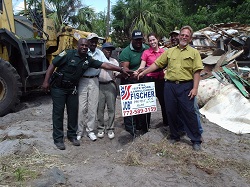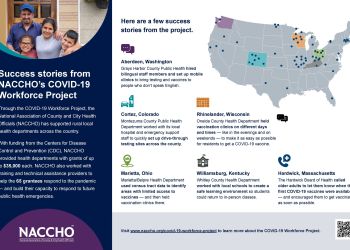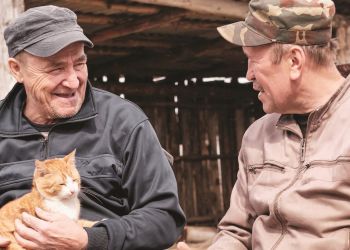By Julianne Price, Environmental Health Coordinator, Florida Department of Health in Indian River County
Environmental health professionals who don’t have a seat at their local table for accreditation efforts should pull up a chair and join the group. For many years, the environmental health profession has held fast to the roots of enforcement and regulation. It makes sense—enforcement and regulation are the “bread and butter” that pays the bills for many departments across the nation. However, times are changing, and for the better. With an increasing number of health departments pursuing accreditation, the future of the profession is bright—but leaders must continue to push forward into this unchartered territory. The Florida Department of Health in Indian River County (FDHIRC) did just that when it achieved accreditation, largely by diving head first into the built environment realm and population based health.
The Public Health Accreditation Board’s (PHAB) national voluntary accreditation program goal is to advance public health performance by providing a national framework of standards for tribal, state, local, and territorial health departments. PHAB is the national organization charged with administering the public health accreditation program. Prerequisites of accreditation include a community health assessment, community health improvement plan and a health department strategic plan. Much of the documentation required by PHAB relates to population based health- work that environmental health does every day.
There is a growing alliance between local health departments that aren’t invited to take an active role in the accreditation process and those that have leadership resistant to working with health educators. For example, addressing built environment improvements and fostering community partnerships are great examples of population based health, but some departments don’t see this as core environmental public health. However, there are numerous processes, resources, tools, and model practices available to assist and increase leadership’s comfort level when it comes to accreditation, and with the built environment movement, too. If the profession doesn’t try something new, it cannot continue to grow. And if it doesn’t continue to grow, it stagnates and declines. It’s harsh, but it’s the awful truth and one that environmental health professionals can avoid. Growth sometimes demands a temporary surrender of security.
Much of the accreditation documentation required to meet the 12 domains set forth by PHAB is focused on population based health. FDHIRC learned just how important of a role environmental public health plays in demonstrating population based health. Indian River’s feedback from a PHAB site review visit indicated that the department had a strength in community engagement, largely due to robust community environmental health assessment work with the Protocol for Assessing Community Health in Environmental Health (PACE EH). The department saw firsthand how the health of the most impoverished communities had suffered because of the lack of infrastructure—homemade septic systems, abandoned homes with drug activity, and no safe places to play or exercise, to cite just a few examples. The county selected the PACE-EH tool more than 11 years ago and has been successful year after year in aiding ailing communities. The health department asks the communities to identify what environmental health problems exist, and then works with residents and partners to address the community-identified issues. Walking trails, the demolition of more than 80 abandoned homes, new water and sewer systems, paved roads, sidewalks, street lighting, park improvements, and so much more resulted from health department efforts.
Environmental public health departments should take the first step into the accreditation process by asking for that seat at the table even if they weren’t initially invited. They should grab the torch and blaze the trail for the next generation to ensure environmental public health will be part of the way forward.
Public health professionals interested in environmental health and accreditation should download one of NACCHO’s newest publications, “The Role of Environmental Health Programs in Public Health Accreditation.” The fact sheet examines the important contribution of environmental health to the accreditation process. NACCHO interviewed local health departments to learn about the steps they take and what types of environmental public health documentation they use in the accreditation process.







